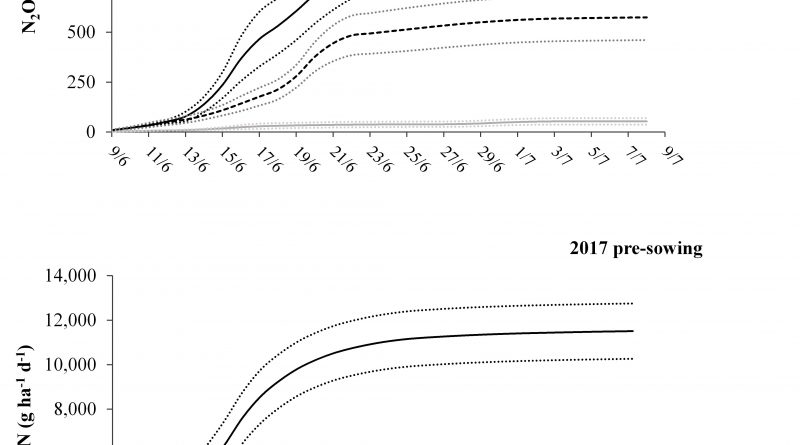THE NITRIFICATION INHIBITOR VIZURA® REDUCES N2O EMISSIONS FROM FERTILIZATION WITH DIGESTATE IN IRRIGATED MAIZE IN THE PO VALLEY
The agricultural area in the Po Valley is prone to high nitrous oxide (N2O) emissions as it is characterized by high rates of nitrogen fertilizers and elevated air temperature in summer. Here, two monitoring campaigns were carried out in maize fertilized with raw digestate in a randomized block design in 2016 and 2017 to test the effectiveness of the 3, 4 DMPP inhibitor Vizura® on reducing N2O emissions. Digestate was injected into 0.15 m soil depth at side-dressing (2016) and before sowing (2017). Non-steady state chambers were used to collect N2O air samples under zero N fertilization (N0), digestate (D), and digestate + Vizura® (V). Overall, emissions were significantly higher in the D treatment than in the V treatment in both 2016 and 2017. The emission factor (EF, %) of V was two and four times lower than the EF in D in 2016 and 2017, respectively. Peaks of nitrate generally resulted in N2O emissions peaks, especially during rainfall or irrigation events. The water-filled pore space did not differ between treatments and was generally below 60%, suggesting that N2O emissions were mainly due to nitrification rather than denitrification. Considering its effectiveness in reducing N2O emissions, Vizura® appears to be a valuable solution for decreasing greenhouse gases emissions in the Po valley climate conditions.

REFERENCE
Chiodini, M.E., Perego, A., Carozzi, M., Acutis, M., 2019. The nitrification inhibitor Vizura® reduces N2O emissions when added to digestate before Injection under irrigated maize in the Po valley (Northern Italy). Agronomy, 9(8), 431. DOI: 10.3390/agronomy9080431.

